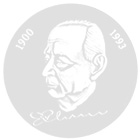OFDM A vision that became reality
OFDM – A Vision that Became Reality
Currently, Orthogonal Frequency-Division Multiplexing (OFDM), a special multicarrier scheme, is one of the most prominent data transmission concepts employed in modern digital communications. It encompasses digital modulation of a large set of complex-valued low-bandwidth subcarriers, located within the available transmission bandwidth, by a stream of information carrying symbols. The frequency spacing between these carriers is made to be the reciprocal of the useful symbol period. In contrast to conventional Frequency-Division Multiplexing (FDM), OFDM requires subcarrier signals that are orthogonal to each other. All carriers are then independent of each other even though their spectra may overlap. Thus, with contemporary signal processing hardware, useful symbol information can be correctly recovered by means of a relatively simple demodulator. High data rate systems are achieved by using a large number of carriers. In addition, modern OFDM systems allow for high spectral efficiency as both the power and the modulation scheme can be individually controlled for each carrier.
Nevertheless, it seems to be fair to say that the original OFDM concept would never have become as popular as it is today. A major obstacle in early OFDM developments was the need for huge arrays of sinusoidal generators and coherent demodulators. It has been 35 years ago from now that the award winner and his colleague Paul M. Ebert, then both working at Bell Laboratories in N.J., diligently thought about less complex implementations of OFDM modems. Digital signal processing was then still in its infancy, but it soon became obvious that new DSP hardware could avoid or mitigate certain complexity problems. Their famous paper entitled “Data Transmission by Frequency-Division Multiplexing Using the Discrete Fourier Transform” was published in the October 1971 issue of the IEEE Transactions on Communication Technology. The authors suggest “… a completely digital modem built around a special-purpose computer performing the fast Fourier transform (FFT).” In addition, they proposed a simple channel equalization method for each subcarrier band. Finally, differential encoding of the input data was suggested to avoid entirely the necessity for an equalizer.
Though the concept was precisely and completely defined, building fully digital modems around IFFT and FFT modules, respectively , was anything but simple at the early 70s. It took another 20 years of research and technology development before these modules became available in the form of sufficiently fast and cheap hardware. Then, however, the number of new applications and transmission standards grew steadily at a high rate. Within the last decade, an abundance of new OFDM-based products successfully entered the market, in sectors including wireline (x-DSL, PLC, etc.) and wireless services such as, e.g., DAB, DRM, DVB-T, HIPERLAN/2, IEEE 802.11a/g. Various other standards are still under discussion. In fact, for the time being it is hard to see an end to the tremendous technical advances being made.
The EDUARD-RHEIN-FOUNDATION s 2006 Basic Research Award is presented to Professor Stephen B. Weinstein in recognition of his pioneering work on marking orthogonal frequencydivision multiplexing (OFDM) a reality. This recognition goes to an internationally renowned research scientist and manager who, over a sustained period of time, contributed to full success and worldwide acceptance of OFDM as a robust and bandwidth efficient data transmission technique.
Prof. Dr. Horst Bessai,
Universität Siegen
